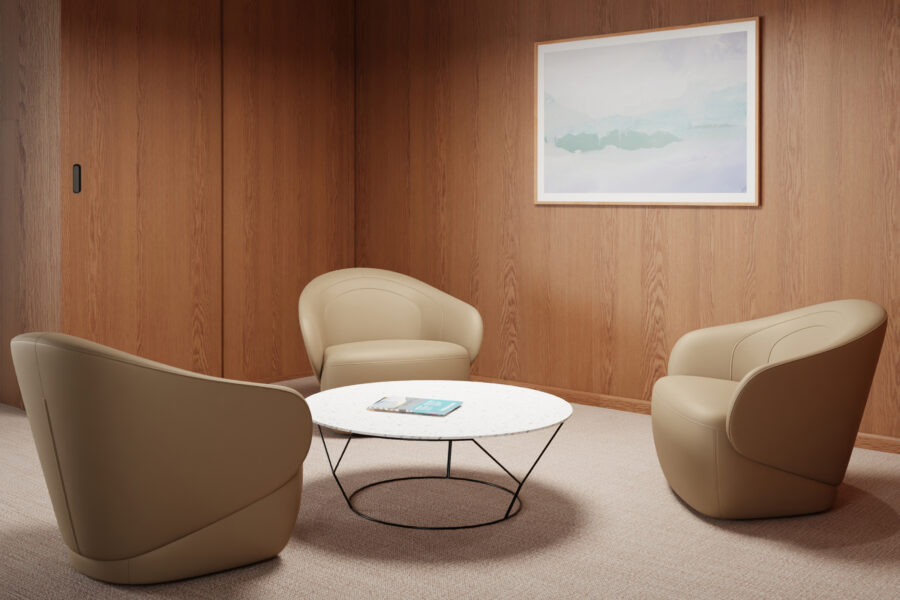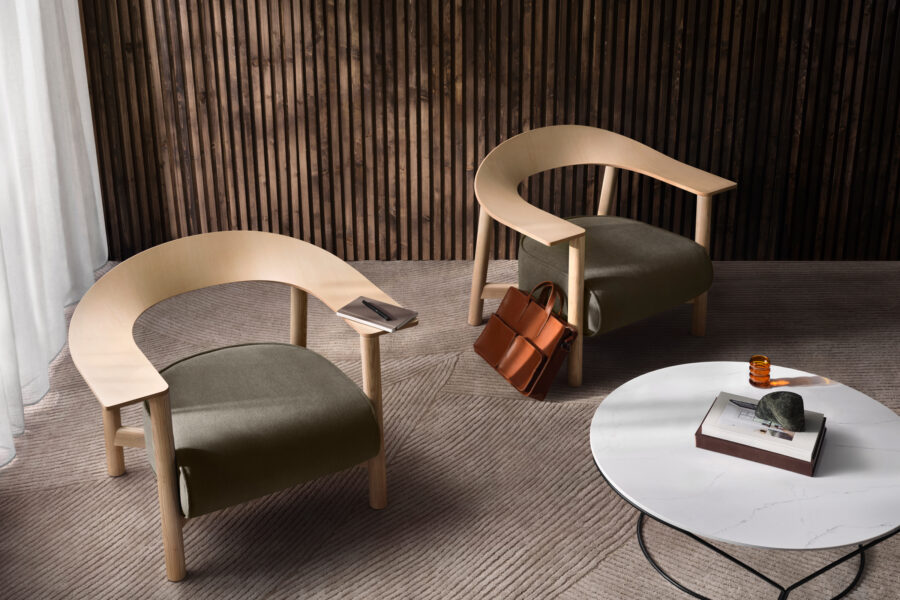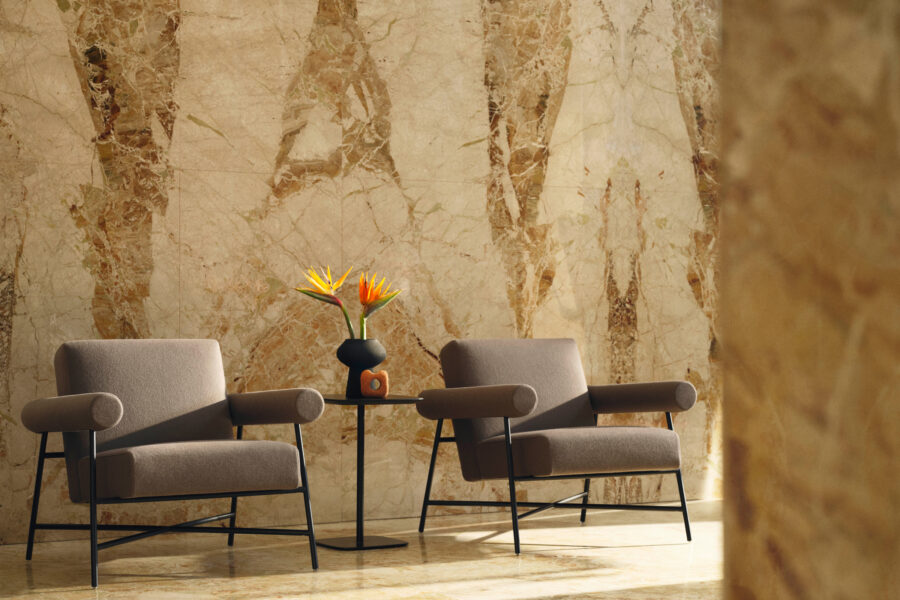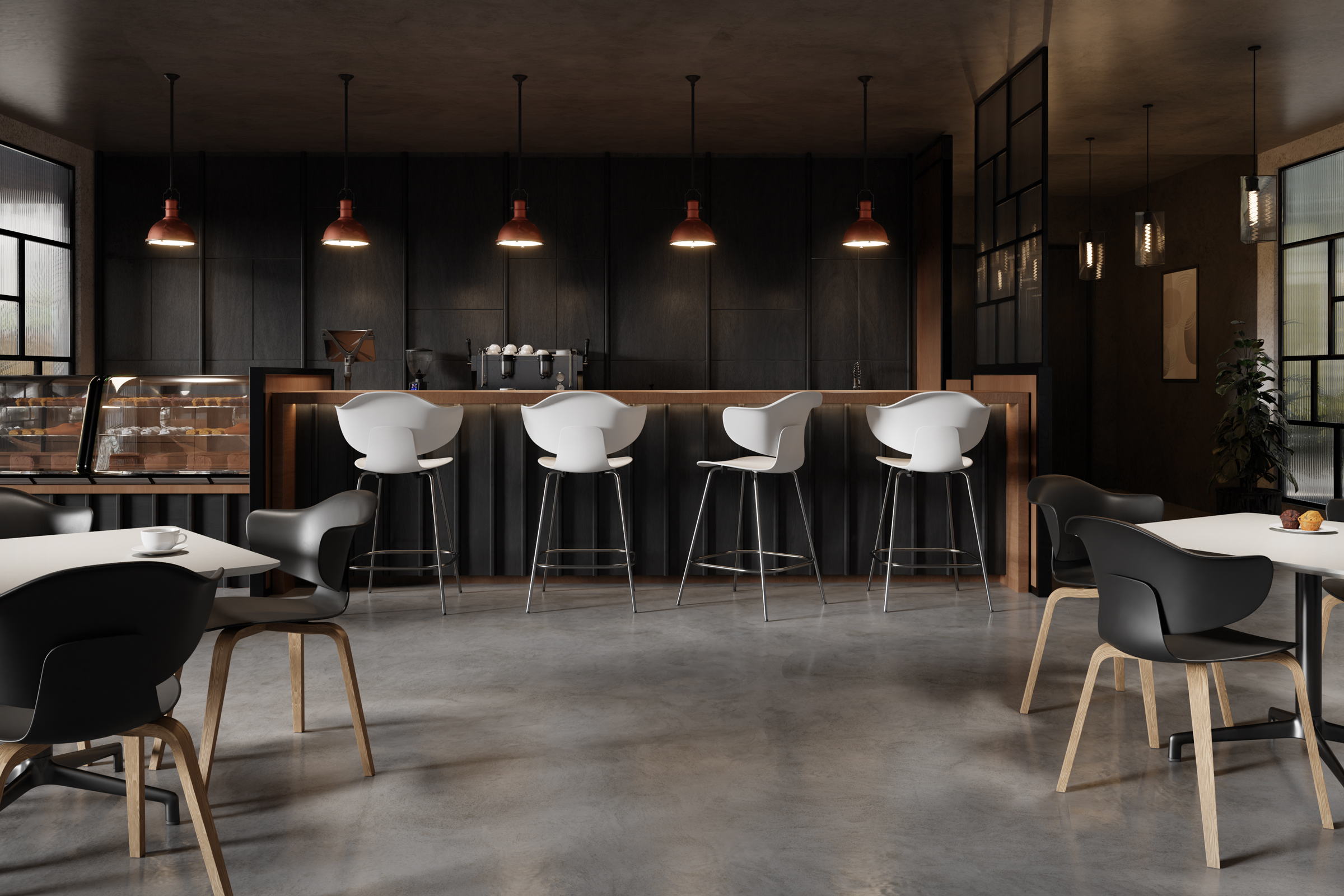Story at a glance:
- North American contract furniture manufacturer Keilhauer is focusing on carbon neutral as a key element in its product launch.
- The company is promoting collections of carbon-neutral office chairs, side chairs, stools, and ottomans, plus four new carbon-neutral lounge chairs in summer 2024.
- Designed for beauty and sustainability, Keilhauer products undergo a cradle-to-grave assessment to ensure responsible sourcing, manufacture and ultimately, disposal.
Terms like carbon-neutral and sustainable get tossed around a lot in resource-intensive industries like design and construction. But one contract furniture company is taking a cradle-to-grave approach to the design and manufacture of its products to reduce its environmental impact—and that of its products.
The North American contract furniture manufacturer Keilhauer introduced Swurve—what may be the world’s first carbon-neutral office chair line—in 2020. The company followed up with Melete, a collection of side chairs and stools, in February 2023, and the industry’s first certified carbon-neutral ottomans, Vagabond and Dally, in March 2023. In June they’ll debut four new carbon-neutral lounge chairs at Chicago’s NeoCon.
Meeting Market Needs

The whimsical Vagabond is the world’s first carbon neutral ottoman. Photo courtesy of Keilhauer
The demand for sustainable products has grown apace with the growing awareness of the built environment’s impacts on climate. “Sustainability has become a leading indicator of the success of an organization, as well as a valued attribute of a product,” says Josh Belczyk, sustainability officer for Keilhauer. “In the eyes of many investors it’s no longer enough for companies to simply focus on short-term profit, and in the eyes of many customers it’s no longer enough for products to simply compete on cost.”
When it comes to sustainability in the built environment, Belczyk says architects and interior designers are at the tip of the spear. “There are valuable statements for the clients, builders, and eventual owners to be able to make about a new project. The sustainability attributes of products is one of the most promoted, advertised, and salient differentiators. It’s become quite an arms race.”
Product Manager Maggie Keilhauer says the company watched as trends in the market moved in that direction. “Since the company started we have worked on growing our sustainability practices and staying ahead of trends. It has always been important for us to do what is right, well before these metrics were in the spotlight,” she says. “With the conversation about carbon neutrality starting to take off, we decided we would launch an office chair that was very organic feeling to test the waters. Making all of our products carbon-neutral is the goal.”
Starting Sustainable

Keilhauer plans to make all of its contract furniture, including Swish (seen here) carbon neutral. Photo courtesy of Keilhauer
Making a chair or ottoman 100% carbon-neutral requires careful sourcing and consideration of the totality of the product’s environmental impacts, including transportation and disposal. But it’s an ongoing challenge to control every aspect of carbon neutrality.
“We have control over the evaluation and selection of suppliers with whom we work and the source materials,” Belczyk says. “We can control how we consider the proximity of those suppliers to try to reduce transportation costs. And we have control over our own operations and over the design of the product itself.”
The process begins with a cradle-to-grave life cycle assessment of the product and its components. Keilhauer streamlines design and manufacturing to minimize waste, choosing materials that include recycled content and finding additional ways to reduce a product’s carbon footprint.
It can take just three months to add a product to an existing line if Keilhauer has already performed most of the legwork on the sustainability of suppliers and components, or up to nine months for a completely new product with a new supply chain.
Front-end work gets into details like what kind of glue or foam is used in manufacture. “You know—all of the little nitty-gritty things that go into a product,” Keilhauer says. “We align on that early because it allows the engineering team to develop a product that has as little impact as possible, then you offset what you inevitably can’t design for.”
Appealing Aesthetics

Designed by Austrian design studio EOOS for Keilhauer, the new Dais chair features an elegant, FSC-certified frame with a bio-based foam seat. Photo courtesy of Keilhauer
Looks and longevity are important factors in the carbon-neutral equation. An aesthetically pleasing, high-quality design that lasts has a smaller carbon footprint and produces less waste, so the company prides itself on creating timeless designs. “If you make a beautiful product and it’s sustainable, people will buy it and keep it in use for a longer life,” Keilhauer says.
“We look at what people are looking for regardless of sustainability,” she adds. “You don’t want to make a product no one wants—that just becomes waste. We look at what other people in other industries are doing and try to figure out what new and interesting materials we can use.”
More architects and interior designers are looking for an organic feel, bringing the outdoors in with inviting green spaces and soothing shapes and textures. The sweeping lines of Swurve meet the trend, incorporating a sustainably sourced and manufactured mesh that requires less gluing and less material.
With work-from-home and hybrid environments now commonplace, there’s also a call for more flexible seating in offices. Inspired by the shape of an orange pip and created by award-winning designer Andrew Jones, the Vagabond is named for its portability. It features a reinforced black leather handle and can be used to stage impromptu sit-downs or grouped in a communal area.
“As the shape of hybrid work continues to evolve, we think collaboration is the key,” Keilhauer says. “Collaboration is the reason you go to the office—to have those one-off conversations you would never have otherwise. We focus on making those conversations happen comfortably.”
Certified Components

Keilhauer launched its new Toob seating in late spring 2024. Photo courtesy of Keilhauer
Keilhauer backs up product claims with certifications to build buyer trust. For example, all carbon neutral lines are certified carbon-free by ClimeCo and carry BIFMA Level 2 and Indoor Advantage Gold SCS Global Services certifications. They also partner with suppliers who source certified Forest Stewardship Council wood to reduce climate impact and ensure proper support of Indigenous communities.
Keilhauer presents clients with an Environmental Product Declaration (EPD) that summarizes the technical content that goes into its life cycle assessment while protecting suppliers’ proprietary information.
The information supports LEED and WELL certifications, including information on how products affect indoor air quality. Some Keilhauer lines include an extended manufacturer responsibility program that asks owners to return retired items for disassembly and recycling.
Internal Transparency

Keilhauer launches its new Abl seating in June 2024. Photo courtesy of Keilhauer
Checkpoints throughout development ensure the end-product is both salable and sustainable. “Sustainability is often described as ‘the ultimate team sport’ in the corporate world because we have to work cross-functionally with all departments—from accounting and finance to engineering, procurement, and operations and eventually to product development, marketing, and communications,” Belczyk says.
“There are internal and external aspects of transparency in carbon neutrality,” he adds. “Internally the challenging aspects are quantifying things that have never been quantified before; it’s a difficult technical project to calculate a carbon footprint. That’s true for both the organization and for any given product.”
While it’s difficult to reengineer an existing product, Keilhauer is working on getting all of its offerings—even it legacy lines—to achieve carbon neutrality going forward. “Making products people will use and making them as sustainable as possible is what we’re focusing on right now,” Keilhauer says.
“We’re leading in a lot of ways because we’ve been doing it for so long,” she adds. “We really care about the environment and try to be as sustainable as we can. It’s part of who we are as the Keilhauer corporate family—and it’s a team effort that includes every employee at every level.

